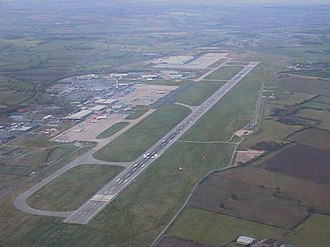The Significance of East Midlands Airport in the UK

Introduction
East Midlands Airport (EMA) plays a crucial role in the UK’s transportation network, serving as a vital hub for both passenger and cargo flights. Located between Leicester, Nottingham, and Derby, this airport has cemented its place as one of the busiest in the UK. Its strategic positioning not only facilitates travel but also supports the economy in the East Midlands region and beyond.
Recent Developments
In recent months, East Midlands Airport has seen a significant uptick in flights as travel restrictions have eased and demand for air travel has surged. According to statistics released by the Civil Aviation Authority, the airport reported a 30% increase in passenger numbers compared to the last year. Major airlines such as Ryanair and the newly reinstated TUI have announced additional routes for the summer season, catering to holidaymakers eager to travel once again.
The airport is also expanding its cargo operations. In September 2023, EMA broke its records, handling over 30,000 tonnes of cargo in a single month. This is indicative of the increasing reliance on air freight, particularly for time-sensitive goods. The growth in the logistics sector at EMA has prompted further investment, estimated at £15 million, aimed at enhancing facilities and capacity.
Services and Sustainability Initiatives
East Midlands Airport operates with a focus on sustainability, aiming to reduce its carbon footprint drastically. Initiatives such as the introduction of electric ground vehicles and partnerships with local environmental groups demonstrate the airport’s commitment to becoming greener. Additionally, EMA has recently launched a new solar power project aimed at generating sufficient energy to power a significant portion of its operations.
Future Outlook
Looking towards the future, East Midlands Airport is set to be a cornerstone in the region’s recovery from the impacts of the pandemic. Enhancements to its runway and terminal infrastructure are in the pipeline, expected to be completed by 2025, which will increase its capacity to handle more flights efficiently. Analysts predict that EMA will not only retain its position as a foremost passenger gateway but also expand its cargo service capacity to address growing online shopping demands.
Conclusion
East Midlands Airport’s recent developments highlight its significance not just as an air travel hub but also as an economic engine for the East Midlands. With ongoing growth and sustainability initiatives, EMA is well-positioned to continue its vital role in the UK transport network. For residents and businesses alike, the airport represents a gateway to the world, bringing with it opportunities and connections crucial for modern life.









